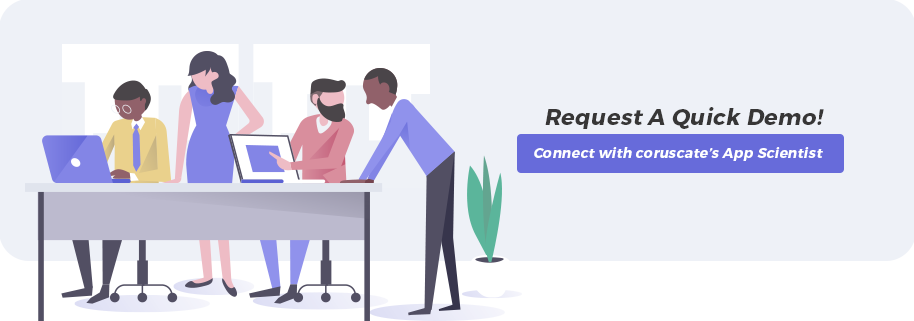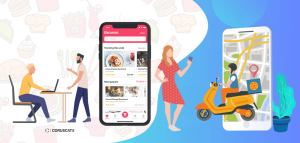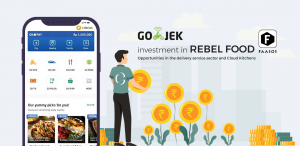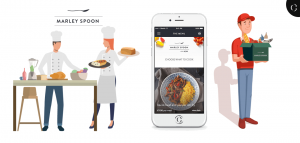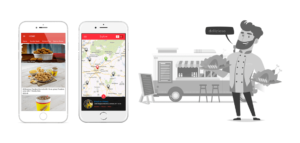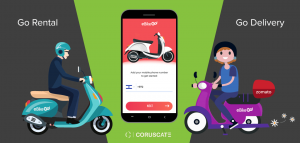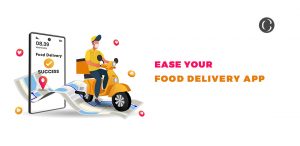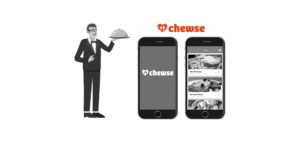Industry Insights of On-demand food delivery app businesses : Current Market and Future Trendspotting
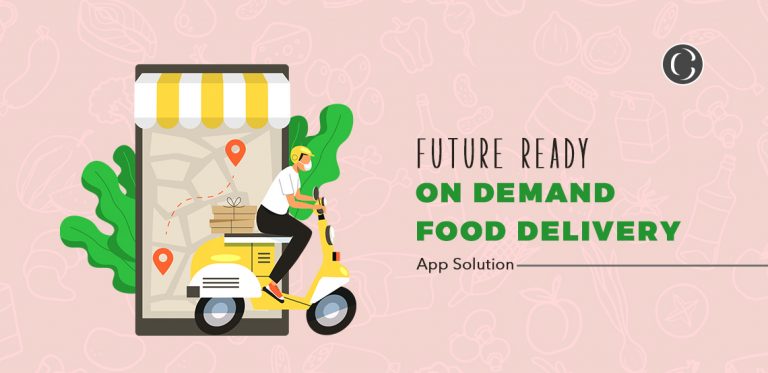
Since the world has started moving fast-tracked towards digitalization, businesses of all the industries have no other option but to keep up with it. The food-service industry is no exception to this.
Though the on demand food delivery apps were popular among the masses even before the pandemic, during the pandemic, they got praiseworthy appreciation.
From restaurants to food trucks, the trend of ordering food through the application is passing fancy amongst the consumers.
As customers could enjoy the much-loved food from their favorite restaurants without leaving their home or breaking the lockdown restrictions.
Some of the leading players in the industry across the globe are: DoorDash, Grubhub, Instacart, Just Eat, Postmates, Seamless, Uber Eats, Zomato, etc.
The success of any food delivery app highly depends on the UI/UX. Thus the demand for unique and reliable food delivery app development solutions has increased globally.
And here we are with the extraordinary food delivery app solutions for you. So, without further ado, let’s start with the market analysis and customer behavior in the industry.
Current scenario of the global on demand food delivery market:
As stated, due to the recent constraints in dining in restaurants, many companies across the globe like Grubhub, Uber Eats have seen an influx of app usage during the pandemic.
According to the report published by eMarketer, Q2 of 2020 has seen the highest year-over-year growth of 25.2% in daily average orders on food delivery apps which marked 45.6 million numbers.

Another report published by Statista on on demand food delivery apps mentions the revenue of the USA food delivery market amounts to USD 23.9 Billion in the year 2020 and estimates a whopping hike of USD 29.2 Billion by the year 2024 in the revenue.

After looking at the fascinating opportunities of penetrating the flourishing on demand food delivery industry, the first thought that comes to mind is to understand how this business works! So, let’s see:
Nuts & Bolts of on demand food delivery business?
The first and foremost aspect of any business is the stakeholders involved in it. So, let’s how many parties are involved in the food delivery business.
» Stakeholders in an on demand food delivery business:
Admin/Aggregator
Admin/Aggregator is the one who owns/manages the backend of the food delivery app and engages multiple restaurants as well as customers.
Restaurant Partners
These are the restaurants that tie-up with the admin to offer their food offerings in the delivery app in return for a commission.
Delivery Partners
The delivery partners are crucial entities in an on demand food delivery business as they are the one who takes responsibility for delivering the food to the right place at the right time.
Customers
No definition is needed to explain this stakeholder, customers are the heart of the food delivery business like any other business.
» Business models of food delivery service:
A food delivery app can be offered by any particular restaurant or by an independent entrepreneur or joint venture by both of them. This way, the food delivery business can work in 3 distinct business models:
Admin/Aggregator owned app
In this model, a third-party owns the food delivery app, partners with different restaurants. The most popular aggregators that earned higher customer/restaurant loyalty worldwide through this model in the industry are DoorDash, Grubhub, UberEats, Zomato, etc.
In most cases, they offer subscription plans for restaurants to enlist them on the app and charge a small commission from them on every successful order through the app.
Here, the admin may or may not provide the delivery network of personnel and vehicles, but certainly, provides separate UI for the delivery team in their app.
Restaurant owned app
The restaurants can have their in-house delivery network and in such cases, the restaurant owns/manages the food delivery app. Dominos Pizza is a classic example of this business model.
This business model of food delivery service ensures higher customer loyalty. As restaurants, here enjoy full control over delivery services in terms of human resources, vehicles, time, and accuracy.
But more often than not, restaurants have to maintain higher standards of delivery on-time and quality of food.
Hybrid app
As the name suggests, restaurants that own a food delivery app can collaborate with aggregator packaging and delivery to avoid the additional expenses of setting up a delivery network.
But there are inevitable disadvantages of relying on the third-party for delivery, such as maintaining the quality in packaging, ensuring timely delivery, etc.
» Crucial aspects of the food delivery app solution:
The food delivery app is the heart and soul of the business. As the failure or success of your business solely depends on the UI/UX of your app.
To launch a commendable app in the market, the technical aspects of the development process should be robust, secure, and flexible to accommodate any additional features your app may need in the future.
For that, you need to hire a talented UI/UX designer for eye-appealing app design, an experienced web designing team that can convert your website to a PWA for better UX, a professional database & backend team, most importantly proficient quality & testing team that can fix errors/bugs in your app.
As we have discussed, a food delivery business needs three different user interfaces (UI) for customers, restaurants, and delivery partners according to their different usage needs.
UI for customer
Customer UI should offer them to locate the nearby restaurants, check the menu, order from the app, payment through the app, help & support, track the delivery.
UI for restaurant
Restaurant UI should allow them to manage their menu, specialties, pricing, offers, and related things.
UI for delivery partners
Delivery UI should help the delivery team to accurately locate the place of receiving/delivery, trace the route to the location, update/manage the status of the delivery.
In the case where admin and restaurant are separate parties, admin owns/manages the backend of the app and they connect with the restaurant customer-orders through their apps.
Therefore, in any case, you have two options for app designing:
- To create a single app with three different UI under the same branding.
- To create three different apps for separate UI and seamlessly sync all 3 together under the same branding.
While login, registration, and profile management features are needed for all the three UI, the holistic food delivery app should have customized & advanced features for better UX and keep your app relevant in the cut-throat competition of the market.
» Advanced features of an on demand food delivering app:
Admin Panel
- Customized Dashboard
- Restaurant Management
- Delivery Management
- Customer Management
- Order Management
- Payment Management
- Offers & Promotions
- Push Notifications
- Analytics
Restaurant Panel:
- Customized Dashboard
- Brand theme management
- Stock Management
- Order Management
- Customer Management
- Payment Details
- Offers and Promotions
- Push Notifications
- Help & Support
- Analytics
Customer Panel
- Easy onboarding
- Manage profile
- Interactive UI
- Smart search for cuisine
- Ingredients details in the meal
- Place an order with invoice details
- Manage order
- Track order
- Multiple Payment gateways
- Offer and promotional benefits details
- Push notifications
- Chatbot for help & support
Delivery Panel
- Customized Dashboard
- Profile and availability management
- Auto assignment of orders
- Real-time delivery requests and tracking
- Delivery management/prioritization
- Delivery history
- Invoice and payment details/history
- Push notifications
- Support
Rising & Shining:
Though the food delivery service market is flourishing, so are the existing players of the industry. Be it in terms of delivery service standards, app features, or technical aspects.
If you are looking for thriving in the food delivery industry with your app by just providing a couple of new features, or marketing no-contact delivery would be of no help.
You have to market-ready with some brilliant ideas for increasing your customer base, for example, including grocery service or meal-kit delivery.
You can also think of developing an app for not just food delivery but one that provides users a personalized feed of updates/developments/new launch/delicious fusion food options to increase engagement and retention.
Whether you plan to put an aggregator app or a stand-alone app for your restaurant in the market, as we saw, technical aspects of your app would be difficult to handle if you don’t have an expert team of app designers/developers.
Coruscate is the place where all of the above advancements can be brought in your app. We can not just help you develop an incredible future-ready food delivery app solution, but can also help you define the business opportunities, business model, strategy to grab the market and bring your business to another level.
You can reach out at any time to us for more information and a thriving solution! We are just a click away!
